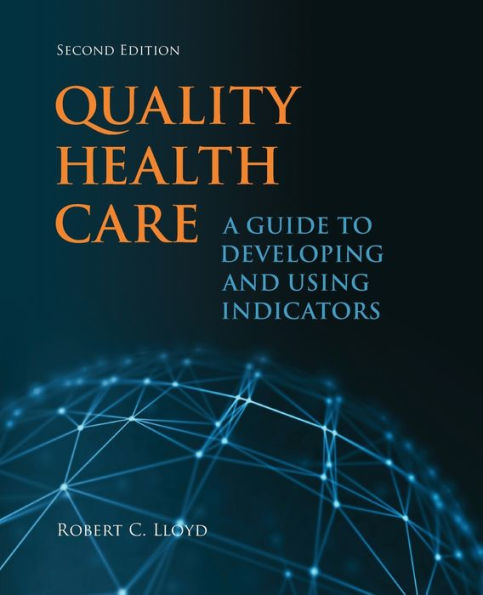Table of Contents
Acknowledgments ix
Foreword xi
Introduction to the Second Edition xiv
About the Author xvii
Chapter 1 Setting the Context for Measurement 1
The Growing Demand for Transparency 2
The Growing Focus on Patient-Centered Care and Service 12
The Quality Funnel 19
References 24
Chapter 2 Why Are You Measuring? 25
Connecting the Dots! 25
Types of Studies 28
Research for Efficacy, Efficiency, and Effectiveness 30
The Three Faces of Performance Measurement 33
Case Study #1 Being a Translator 39
References 44
Chapter 3 Measuring the Voice of the Customer 45
It All Starts with Listening 45
Creating a Service Excellence Culture 46
Who Are Your Customers? 55
Defining Key Quality Characteristics 57
Listening Three Times 60
Understanding VOC Tools 61
Focus Groups 64
Observation 64
Personal Interviews 65
Leadership Walk-Rounds 65
Unsolicited Feedback 65
High-Tech Tools 66
The Experiential Shopper 66
Surveys 67
References 91
Chapter 4 Milestones in the Quality Measurement Journey 93
Developing a Measurement Philosophy 93
Measurement Roadblocks 95
Milestones in the Quality Measurement Journey 99
Selecting a Specific Indicator 104
Developing Operational Definitions 109
Developing Data Collection Plans 113
Probability Sampling 117
Nonprobability Sampling 120
The Indicator Development Worksheet 127
Case Study #1 Transcription Turnaround Time 132
References 141
Chapter 5 Organizing Indicators into a Strategic Dashboard 143
Evolution of the Strategic Dashboard 144
Focusing on the Vital Few 151
Case Study #1 East London National Health Service (NHS) Foundation Trust's Strategic Dashboard 152
The Role of Benchmarking 155
References 158
Chapter 6 Tapping the Knowledge That Hides in Data 159
Data Versus Information 159
Static Versus Dynamic Approaches to Data Analysis 163
Case Study #1 The Monday Morning Dilemma 168
References 169
Chapter 7 Overcoming Numerical Illiteracy 171
Understanding Variation Conceptually 171
Distinguishing Common from Special Causes of Variation 179
Making the Appropriate Responses to Common and Special Causes of Variation 182
References 185
Chapter 8 Understanding Variation with Run Charts 187
What Is a Run Chart? 187
How Do I Construct a Run Chart? 188
How Do I Analyze a Run Chart? 190
Case Study #1 Hand Hygiene Compliance 199
A Few Closing Thoughts on Using Run Charts 202
References 209
Chapter 9 Understanding Variation with Shewhart Charts 211
Run Charts Versus Shewhart Charts 211
What Is a Shewhart Chart? 211
Key Questions About Shewhart Charts 214
Deciding Whether a Special Cause Is Present 219
Deciding Which Shewhart Chart
Is Most Appropriate 225
Types of Data 226
Types of Shewhart Charts 229
Defining the Key Terms 230
You Make the Call 242
Additional Shewhart Charts 247
Using Shewhart Charts Effectively 249
References 257
Chapter 10 Applying Quality Measurement Principles 259
Case Study #1 Predictinga Cardiovascular Event 259
Case Study #2 Sampling Central Line Infections 265
Case Study #3 Sampling Medicare Insurance Audits 267
Case Study #4 Tracking Patient Falls 268
Case Study #5 Pressure Ulcer Prevention 272
Case Study #6 Evaluating Staffing Effectiveness 275
Case Study #7 To Flash or Not to Flash-That Is the Question 283
Case Study #8 Clarifying the Operational Definition of Readmission 286
Case Study #9 Managing a Breast Cancer Patient's Clotting Levels 287
Case Study #10 Group B Streptococcus in Pregnant Women 290
Case Study #11 Emergency Department Fast Track 293
Case Study #12 Tracking Patient Complaints 296
Case Study #13 Reducing Ventilator-Associated Pneumonia 300
Case Study #14 Pain Management for Hip and Knee Replacement Patients 306
Case Study #15 Hospice/911 Paramedic System Partnership to Improve Care 315
Case Study #16 Improving Access to Community Services for Mental Health and Community Health Patients 317
References 329
Chapter 11 Connecting the Dots 331
Adopting Quality as a Business Strategy 332
Developing a Learning System to Support Improvement 336
Linking Measurement to Improvement 339
Building Capacity and Capability for Improvement 346
References 360
Index 363






